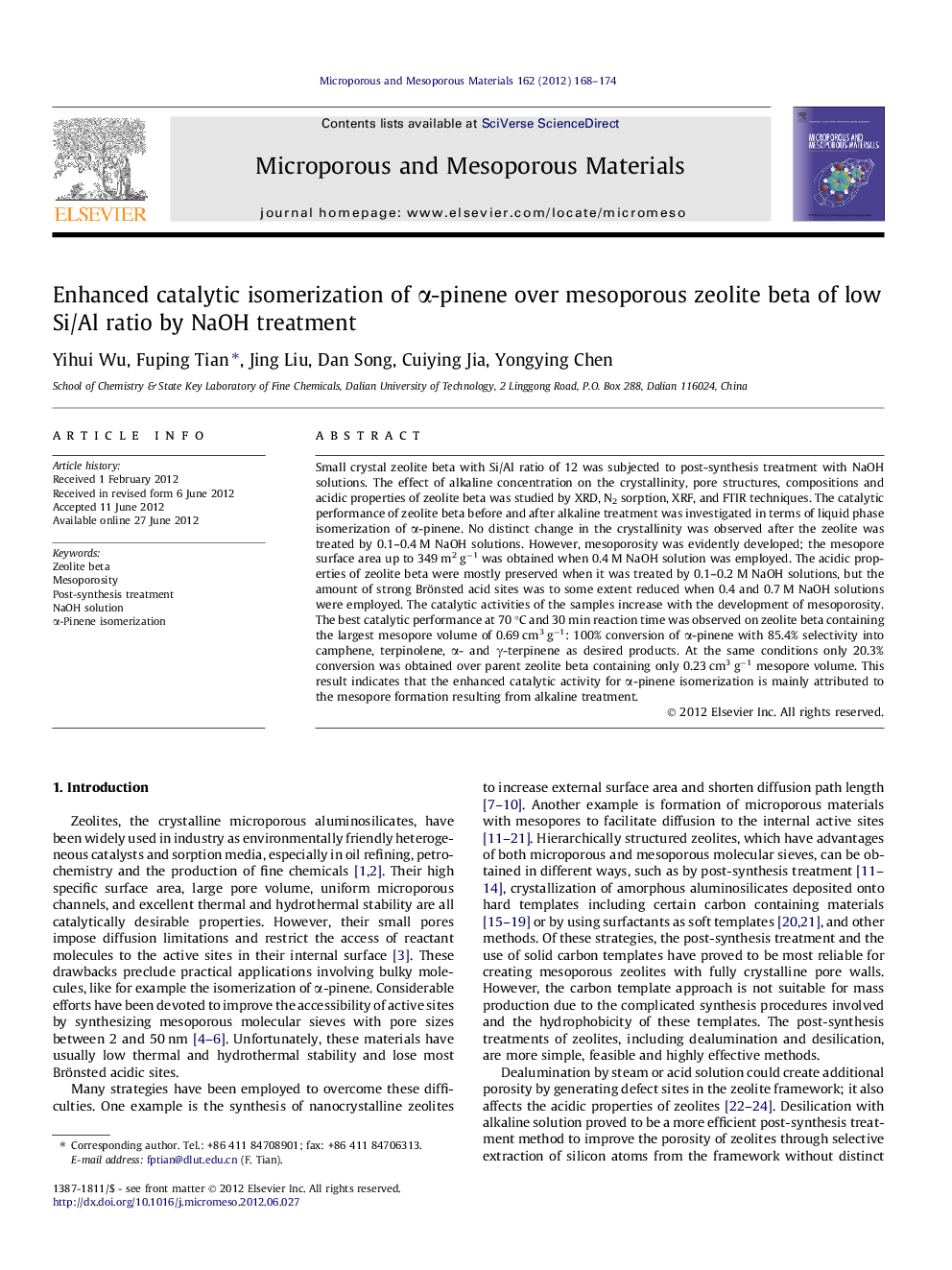| Article ID | Journal | Published Year | Pages | File Type |
|---|---|---|---|---|
| 73788 | Microporous and Mesoporous Materials | 2012 | 7 Pages |
Small crystal zeolite beta with Si/Al ratio of 12 was subjected to post-synthesis treatment with NaOH solutions. The effect of alkaline concentration on the crystallinity, pore structures, compositions and acidic properties of zeolite beta was studied by XRD, N2 sorption, XRF, and FTIR techniques. The catalytic performance of zeolite beta before and after alkaline treatment was investigated in terms of liquid phase isomerization of α-pinene. No distinct change in the crystallinity was observed after the zeolite was treated by 0.1–0.4 M NaOH solutions. However, mesoporosity was evidently developed; the mesopore surface area up to 349 m2 g−1 was obtained when 0.4 M NaOH solution was employed. The acidic properties of zeolite beta were mostly preserved when it was treated by 0.1–0.2 M NaOH solutions, but the amount of strong Brönsted acid sites was to some extent reduced when 0.4 and 0.7 M NaOH solutions were employed. The catalytic activities of the samples increase with the development of mesoporosity. The best catalytic performance at 70 °C and 30 min reaction time was observed on zeolite beta containing the largest mesopore volume of 0.69 cm3 g−1: 100% conversion of α-pinene with 85.4% selectivity into camphene, terpinolene, α- and γ-terpinene as desired products. At the same conditions only 20.3% conversion was obtained over parent zeolite beta containing only 0.23 cm3 g−1 mesopore volume. This result indicates that the enhanced catalytic activity for α-pinene isomerization is mainly attributed to the mesopore formation resulting from alkaline treatment.
Graphical abstractFigure optionsDownload full-size imageDownload as PowerPoint slideHighlights► Mesoporous zeolite beta with low Si/Al ratio were obtained by alkaline treatment. ► The crystallinity was preserved after treatment by 0.1–0.4 M NaOH solutions. ► Modified zeolite beta showed enhanced catalytic activity for α-pinene isomerization. ► The high activity is mainly due to the evidently developed mesoporosity.
